Spice Trade Chronicles 6-The Netherlands
The Netherlands, formerly known as Holland, has been a global leader in trade since the late 1500’s.
Netherlands literally means ‘lower countries’ where 50% of the country is only 3 feet above sea level! The Netherlands is a very largely populated country and is today, one of the largest exporters of agricultural products in the world.
The landscape can only be described as hearty, which also describes the people who live there. Learning about the landscape, I am wowed by the brilliance of the Dutch in how they’ve managed to build an entire country on swampy land that was originally under sea level.

The use of windmills and dams is amazing . They came up with a way to pump the water to the opposite side of a dam, and keep the water there, which is an amazing feat as water is very hard to control! The construction and use of the windmills is similar to how we sail a ship, the wind is directed through the “sails” to control the speed of the wind, and the water is moved through giant screws across dams to keep the fields from being flooded. How clever, and it is still being used that way today.
The food is simple and filling, many meals consisted mainly of bread, fish and cheese.
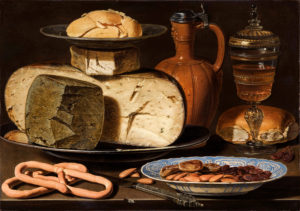
The food is as healthy as it is hearty. This sounds like a contradictory description, but it’s true! The cuisine is loaded with good for you local fish and vegetables. The cooking style is referred to as Dutch cuisine.
Dutch cuisine, or the Nordic diet, being very close to the Mediterranean diet, is trending right now.
As with most health conscience diets, seasonal, local foods are captured in the many dishes that make the cuisine unique. Local foods from Finland, Norway, Sweden, Iceland, and Denmark are included in the scope of these foods which have been shown to reduce the risk of diabetes, cardiovascular disease and cancer!
The emphasis is on cooking minimally processed, whole, “made from scratch” meals. Besides oily fish and seasonally grown vegetables, more whole grains, particularly whole-grain oats, rye, and barley are a dietary staple. Also included are berries, root vegetables (potatoes or carrots, for example), nuts, legumes, and dairy. In addition to using fresh grown produce and fish, the spices acquired from the ships coming in from the Spice Islands had a lot to do with how Dutch cuisine evolved.
Just a word on fast food compared to home, scratch made meals.
Everyone is so rushed these days, about 1/3 of the American diet is derived from fast, processed foods which are full of chemicals, salt and sugar, compromising quality of nutrients as well. Because these foods are fast, most people also eat on the run, and don’t eat with “intention” which is better for digestion and absorption of nutrients.
Things were a little different in the olden days. Starting in the 12th and 13th centuries, the diet was basically the same as other Europeans.
Life back in the 12th and 13th centuries was hard, just staying warm was a career. A lot of porridge, soups and root vegetables mixed with a little meat was most folks mainstay meal. Beer was produced at the monasteries and was consumed more than water and milk. Milk was saved for making cheese and butter. This became a hallmark of Dutch cuisine, today, many gourmet Dutch cheeses line our grocery shelves and are savored by people from all over the world. Gouda and Edam are probably the most popular.
By the 14th and 15th centuries, the fishing industry really started to boom as larger ships were built and could withstand longer journeys at sea.
At this time, the Portuguese, along with Spain, pretty much controlled the European spice trade as Lisbon was the main port throughout Europe. Since the Netherlands weren’t getting along with Germany and the United Kingdom, the Dutch commissioned their own fleet of ships and set out on their first spice expedition in 1595. The trip was successful and they came back from Indonesia with a large haul of spices. Enthusiastic about their first success, they proceeded to build their fleet of ships and this led to the founding of the East India Company in 1602.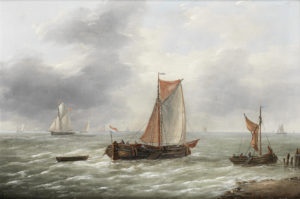
The Netherlands actually became a country in 1581. Cities began to grow and people started to write cookbooks. I figure the meals started to become much more interesting with the addition of the spices brought in from the islands. Most of these books were started from festival foods and the special meals that were prepared during holidays. These dishes contained the fancy stuff not eaten every day: sauces, game, jellies, fish, meat, pies, eggs, dairy products, candied fruits and ginger. Many dishes get their twists from French cuisine as their borders are very close together.
Before the Dutch fleet of ships grew, spices were imported through Germany from the Old Spice Route. The most important spice was pepper, which was always shipped as a large bulk commodity; followed by cinnamon, ginger, cloves and cumin. Salt was especially important as it was the main way to preserve many meats and vegetables for the colder months. Salt was imported from the Old German Salt Road along which many children’s folk tales had their origin. Herring was the most important catch at this time. Salt was used to preserve the catch for export and trade.
In the 1600’s the Dutch took over the spice trade from the Moluccas, or the Spice Islands.
In order to maintain their hold on the islands, the Dutch were ruthless, they used many nasty ploys to maintain their wealth. During the Spice Wars of the 17th and 18th century the Dutch destroyed nutmeg and cloves trees to keep prices high and cut out their competitors.
They tried many different techniques to keep the trade to themselves. They went as far as pulling up trees, soaking the nuts with lime and burning the trees. You gotta love mother nature! None of this worked for them, and thanks to pigeons who lived on the islands, they would eat the seeds and start new crops on other islands via their droppings.
All this made the spices worth so much, they were getting a 60,000% profit on the spices back in Europe, wow! This price was due to the fact that the spices, namely nutmeg was also being used as a preservative and medicine besides that it tasted good! This lasted into the 18th century when a French missionary smuggled nutmeg out of the Dutch East Indies and replanted them in Madagascar, Mauritius and Zanzibar off the eastern coast of Africa. The British planted Nutmeg in the Caribbean on the island of Grenada, and Grenada has become known as the Spice Island of the Caribbean. They even have nutmeg on their flag!
By the late 1600’s, tulips became all the rage!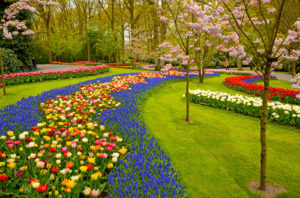
The market for tulips grew so rapidly people resorted to many crazy things to make money on them. Business were formed for the buy and sell of tulips which made for the creation of a “special stock market” just for tulip sales. As with spices, tulips were only able to be bought by the rich. Thousands of pounds of rye and wheat, pigs, sheep and other farm animals were the price for a few tulip bulbs. If you accidentally ate a tulip bulb, you were thrown in jail. I can’t imagine what a tulip bulb tastes like, but I guess, back then they were commonly mistaken for onions!
People became merciless in their desire to sell their own tulips at a large profit. They were known to set their dogs or chickens in a neighbors field to ruin their tulip crop, thus making their own crop worth more. Eventually the infatuation of the tulip dropped off and many people went bankrupt. Spices still prevailed, though!
The Spice War wound down, and in the late 18th century, a French missionary smuggled nutmeg out of the Dutch East Indies and replanted them in Madagascar, Mauritius and Zanzibar off the eastern coast of Africa. The British planted nutmeg on the island of Grenada in the Caribbean, and Grenada has become known as the “Spice Island of the Caribbean”. They even have nutmeg on their flag!
The Dutch Republic hit its “Golden Age” in the 17th century.
Spanning the 17th century, Dutch trade, science, military, and art flourished. Many varieties of fruits, cheeses, meat, wine, and nuts were feasted on at parties and festivals. As ships arrived from their long journey along the Spice Route, exotic spices, fruits, sugar, tea and coffee started to become popular.
Over all these years of torture and triumph, the Dutch ships and sea routes to Indonesia were built and created which blew the doors off the Spanish and Portuguese! Here’s how they did it.
The Dutch were very smart and developed quicker and more efficient southern routes between South Africa and Indonesia making them more profitable than ones used by the Portuguese. Their routes were slower, seasonal coastal routes via India, and they went the long way around the Pacific Ocean and Mexico. Holland became the world’s leader in map making, and their “secret atlases”were hidden for many years. These maps and charts showed the best routes around Africa to India, China, Japan and the East Indies.
The Dutch government built forts all over south east Asia. The Dutch weren’t very welcomed in the islands as they just wanted to take over control. They killed many chiefs from local tribes. They put limitations on the amount of spice trees they could plant and, in general, they were just plain nasty.
Holland’s map makers made maps of the routes the Dutch developed which were more efficient than the routes used by the Portuguese and Spanish traders. These maps were kept secret until they were found in an aristocrat’s library in Austria.
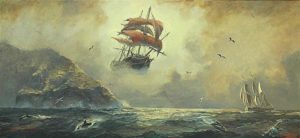
As legends were popular among the spice routes, the legend of The Flying Dutchman was a Dutch East Indies favorite.
Supposedly, the legendary ghost ship was destroyed by a terrible storm and never made port. It is said that it is doomed to sail the oceans forever. Stories have since been told about a “ghost ship” of the Flying Dutchman being spotted out to sea several times. This legend is so popular it has been commemorated by a Wagner opera.
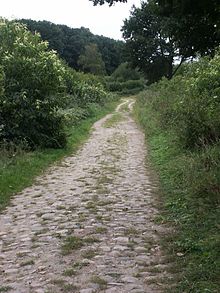
With the arrival of salt from Germany via the Old Salt Road, fish and vegetables were able to be cured and kept for nourishment throughout the winter months. The arrival of the Spice Trade brought exotic ingredients such as dates, rice, cinnamon, ginger and saffron. Mostly available to the rich, these ingredients greatly varied the dishes served at most meals. Peasants still ate porridge and a little meat because these ingredients were very expensive.
The 18th century brought in the potato and this is where much of the Dutch cuisine we know today started from. When we think meat and potatoes, this is probably where that came from. Potatoes were eaten at almost every meal and eventually took the place of bread.
Cold brewing coffee actually originated in the Golden Ages by the Dutch.
This method is a growing trend here in the states among many coffee houses. Cold brewing is simply steeping the coffee grounds in cold water for 3-6 hours or more. Some let it sit overnight.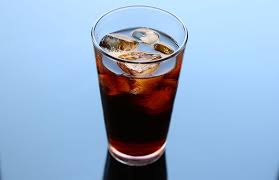
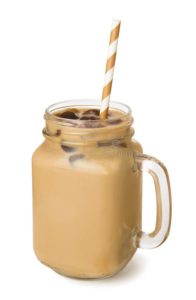
This dates back to the Golden Age in the Netherlands where this is how coffee was brewed. This was very smart thinking! When brewing coffee in cold water, it doesn’t oxidize. When coffee oxides, all the aromas you smell when it is brewing with the hot water method just evaporate into the air, leaving the coffee less flavorful. By reducing this oxidation, all the fruity flavors in the coffee stay right in the liquid. This gives you a more robust flavor and reduces bitterness. It also reduces the acidity of the coffee making it nicer to your stomach. Of course, in the Netherlands, the coffee is usually poured over ice and consumed cold, no milk or sugar added. In using cold brew method, these aren’t necessary to bring out the flavors of the coffee, but if you prefer, certainly feel free to add them. Personally, I prefer my iced coffee on the sweet side with plant-based milk.
It’s easy to make cold brew coffee yourself, no special tools needed. You’ll need a large jar to hold at least a quart, ball jars are the best, a fine mesh sieve and cheese cloth or a coffee filter. That’s it!
This is another No Recipe Recipe!
Cold Brewed Coffee
- Just grind (or have someone do it for you), about 1/2 cup or so, of coffee beans very coarsely. You don’t want it too fine, or it will be bitter. Actually, a blender, rather than a coffee grinder, would probably be the best tool to use for grinding, as you want it pretty coarsely ground.
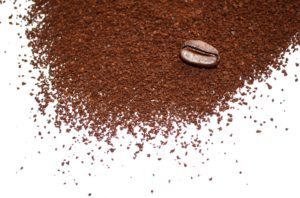
- Add the grinds to 2 cups of cold filtered water and stir. (Use a mason jar or something with a lid, always glass though). Cover and let sit 4-6 hours or over night, (but no longer than 15 hours) at room temperature.
- Strain through a fine mesh strainer lined with cheesecloth, a paper towel or a coffee filter into a clean container. Cover and store in the fridge for up to a week, if it lasts that long.
Enjoy! This makes a concentrate, so you’ll need to dilute it to your taste. Of course, if you want to make more, use a larger jar and adjust ingredients accordingly.
The Netherlands were the first in Europe to import tea.
When Dutch ships landed in Japan they fell in love with tea. As a matter of fact, a celebration was held in Japan for the 400th anniversary of tea with Holland. The link between the two nations dates to April 19, 1600, when the Dutch trading ship De Liefde, was the only ship from a five-ship expedition that reached Japan which departed Rotterdam in June 1598. In the year 2000, Japan held “Holland Festivals” all over the country to celebrate!
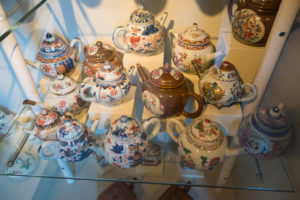
Portuguese traders also brought in tea from Japan. The British, getting wind of it all, started to give the Dutch East India Trading folks a rough time, so the Dutch merchants devised new routes to get the tea to their country without touching the rest of Europe.
Holland folks were loving their tea well before it was introduced to England. England’s love for tea grew because royalty started to drink it, so tea time became a daily tradition with sweets and finger sandwiches served along with pots of tea in the afternoon. It took another century before “Afternoon Tea” became a thing. Today, Afternoon tea is also popular in the Netherlands. Although tea was also bought by the merchants in France and Germany, it didn’t take off so well, they liked wine better.
As tea’s popularity rose different people began to like it different ways. Unlike the British, the Dutch usually don’t put milk in their tea. They enjoyed the more robust flavored teas such as Earl Grey, Strawberry, Cinnamon, Mango, Raspberry, Blackcurrant, and Orange. Pickwick Tea and Lipton are popular tea brands found in Holland. Lipton flavors are a bit more exotic, including jasmine green, mint green, white tea with raspberry, peach-mango, pomegranate-cranberry, Russian Earl Grey, and vanilla-caramel.
The classification of “orange-pekoe” came from the dutch. It was presented to the House of Orange, thus being the tea of royalty.
The cuisines of the Netherlands are divided up by region.
The northeast region, uses lots of meat and bread in their cooking, predominantly rye bread. Different strong flavored sausages are made and served with saurkraut, stamppot, or hutspot. There is a lot of resemblance to other dishes from the Germans and Irish. Stamppot reminds me of Ireland’s Colcannon and hutspot is reminiscent of boiled dinner, (corned beef and cabbage, carrots and potatoes).
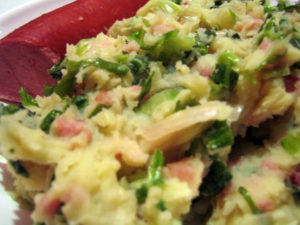
In the western region, the area is flat farm land, and dairy cattle are raised here. This is the land of cheese. Gouda, Edam, and Leyden (spiced cheese with cumin), are common cheeses from this region. Butter, which contains a larger amount of milk fat than most other European butter varieties, is produced here also. Of course we can’t leave out buttermilk, which is the bi-product of cheese making, used in many baked goods.
Other foods common to this area are pastries, cookies, chocolate, mayonnaise and whole grain mustard. Once again, this is very similar to German cuisine. Speculaas is a famous Dutch cookie and is loaded with spices. There is an actual spice blend known as koekkruiden (“cake spice blend“) which incorporates pretty much all the spices from the islands.
Southern region cuisine consisted of rich pastries, soups, stews and vegetable dishes. I would say this is the most unhealthy place to eat in Holland. Haute cuisine began here in the restaurants and hotels. Beef steaks and tenderloins from both beef and pork accompanied by varieties of sauces and potatoes which have been double fried in the traditional Dutch (or Belgian) manner were what was served. (Belgium is well known for their steak frittes). Everything is rich, stews, gravies, pastries, full of cream filling.
The holiday season is a time for celebration.
In the Netherlands, the shops shut down on December 5 and families celebrate Sinterklaas. 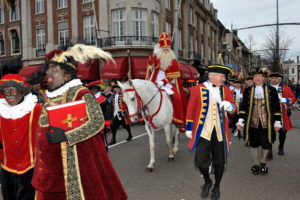 Food is an important part of Sinterklaas and the giving of Speculaas cookies (referred to as spiced biscuits, often in the form of the saint) dates back centuries. On Sinterklaas evening, most families will eat some traditional Dutch winter food such as Stamppot.
Food is an important part of Sinterklaas and the giving of Speculaas cookies (referred to as spiced biscuits, often in the form of the saint) dates back centuries. On Sinterklaas evening, most families will eat some traditional Dutch winter food such as Stamppot. 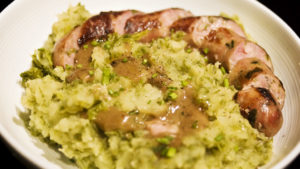 The festivities begin when Sinterklaas, also known as St. Nicholas, traditionally arriving in November on a boat filled with gifts for the children along with many helpers, called ‘Piet”. Unlike our Santa, on December 5, children wait for a knock on the door, only to find a bag of goodies waiting for them on the doorstep, but only if they’ve been good!
The festivities begin when Sinterklaas, also known as St. Nicholas, traditionally arriving in November on a boat filled with gifts for the children along with many helpers, called ‘Piet”. Unlike our Santa, on December 5, children wait for a knock on the door, only to find a bag of goodies waiting for them on the doorstep, but only if they’ve been good!
Goodies are plenty during these festivals. Pepernoten (mini ginger biscuits), Taaitaai (chewy aniseed biscuits) and schuimpjes, loaded with sugar and artificial colors, give everyone a sugar buzz. There are many legends as to how children get their gifts, along with his Piet helpers, Sinterklaas can also toss these goodies into the room, a tradition or legend that goes back to the beginning where the saint throws his payment at prostitutes. They leave their shoes outside the door or next to the fireplace and find gifts in them in the morning. Sinterklaas also can arrive on the roof, and one of his Piet, climb down the chimney to leave the gifts, and with tradition, leaving treats for the horses can also get you a gift. Mulled wine is a popular drink among the adults. This Dutch version of Saint Nicholas is actually the origin of the American Santa Claus!
No matter what you like to eat, there’s sure to be something in the Netherlands to fill your belly. Be it something from the land or the sea, the cuisine here is truly special.
Let me know if you have a favorite Dutch dish, I’ll add it to the page.
Thanks,
Jeanette

CommenHope you are doing well.
I am Ola from Tariqherbs
Company for export herbs, spices and seeds. A leading Egyptian company specialized in supplying all countries of the world. A reliable and distinguished name, we have succeeded in exporting with many partners in many European countriesproducts as well. We guarantee high quality for all our products at competitive prices and are ready to send samples to you for evaluation upon request The company also holds an ISO 9001 certificate and soon you will get an organic certificate. We offer competitive prices for our products and all we want is to satisfy our customers.
Ola
Email: ola@tariqherbs.com
Whatsapp: +201015719341
Website: http://www.tariqherbs.com
Thank you for your information, I’ll keep you in mind if I need anything.